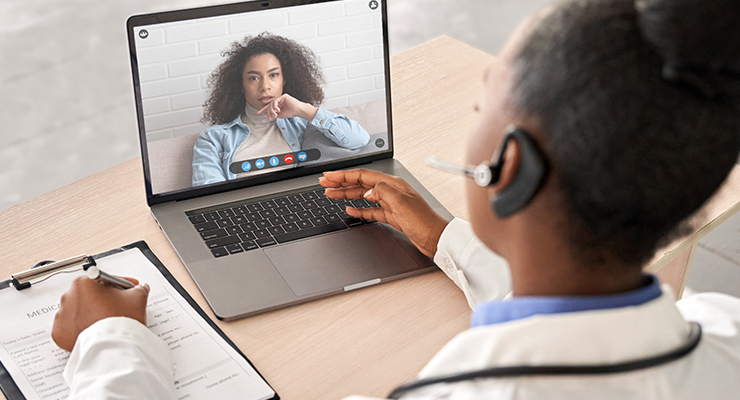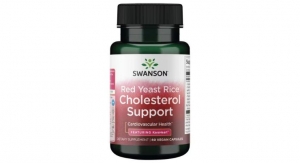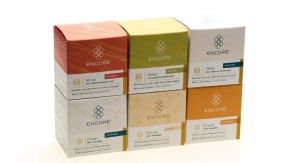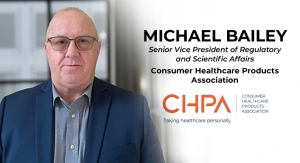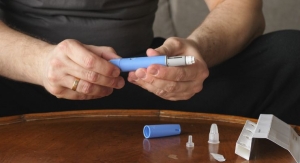By Erik Goldman, Holistic Primary Care12.03.21
Growth in the number of practitioners now utilizing telemedicine, the number of patients accessing teleconsults, and the churn of dollars through the healthcare IT industry has been truly stellar.
Though the rapid expansion that characterized the early phase of the COVID pandemic has plateaued somewhat, there’s no question that this sector will continue to grow.
Teleconsults and remote patient monitoring will never replace all in-person medical encounters, nor will they meet the complete healthcare needs of all people. But when used appropriately, telemedicine is clinically effective, cost-efficient, and highly convenient for practitioner and patient alike.
It has already obviated the need for a lot of face-to-face visits, and as it expands, it is radically reshaping the landscape of medical practice.
The telemedicine revolution—for that is what it is—presents a startling truth, one with which anyone working in healthcare must reckon. It is simply this: the doctor’s office is no longer the primary locus of healthcare; the patient’s computer or smartphone is.
Pent-Up Demand
The COVID pandemic released a technological and financial juggernaut that has been priming for warp-speed growth for decades. To say that there was pent-up demand would be an understatement.
Prior to the pandemic, telemedicine businesses had been developing slowly and steadily. But their acceleration was constrained by several factors:
The pandemic created a truly perfect storm. Within a 3-month period, most of these obstacles all but dissolved.
Early in the pandemic, the Department of Health and Human Services (HHS)—the entity charged with enforcing the Health Insurance Portability and Accountability Act (HIPAA)—announced a temporary easement of the regulations with which healthcare practitioners and healthcare IT companies formerly had to comply.
Telemedicine Uncorked
As communities nationwide implemented social distancing, the volume of physician office visits fell off the proverbial cliff in the spring of 2020. HHS saw the massive need for accessible telehealth services, and rightly recognized that in this public health emergency, HIPAA compliance was an obstacle.
HHS acknowledged that “some of these technologies, and the manner in which they are used … may not fully comply with the requirements of the HIPAA Rules.” The agency chose to exercise its enforcement discretion by refraining from “impos[ing] penalties for noncompliance with the regulatory requirements under the HIPAA Rules … in connection with the good faith provision of telehealth during the COVID-19 … emergency.”
Under the new “normal,” practitioners were free to use any “non-public facing” remote communication platform, including Zoom, Skype, Facetime, Google Hangout, or just about anything else to see patients regardless of whether or not the platform is HIPAA compliant. The exemption applied not just to COVID-related care, but to any healthcare service that can be delivered remotely.
Many, if not most of the telehealth platforms, remote monitoring tools, and health apps are not really HIPAA-compliant (though some claim to be). And nearly two years on, the “temporary” HIPAA suspensions are starting to feel permanent.
The easement of HIPAA enforcement was followed by changes to Medicare, Medicaid, and private insurance reimbursement rules such that practitioners can now get paid for teleconsults on par with equivalent face-to-face visits, provided they are medically appropriate, coded properly, and done with patients who’d been seen in person at least once.
Further, the Coronavirus Aid, Relief, and Economic Security (CARES) act of 2020 allocated $200 million to the Federal Communications Commission specifically for development of telemedicine, and provided funds for eligible medical practitioners, community clinics, teaching hospitals, and local health departments to ease the cost burden of integrating teleconsults into routine practice.
Almost overnight, tens of thousands of practitioners had strong incentive—fiscal survival—to shift into telemedicine. Millions of patients were scrambling for alternatives to “going to the doctor.” And healthcare IT companies had as close to carte blanche as any industry could ever envision. And the situation was global!
By mid-year in 2020, the worldwide market for digital healthcare services reached an estimated $152.5 billion. Researchers project that the industry—which comprises digital health systems, healthcare analytics, and telemedicine—will grow to $456.9 billion by 2026.
Stratospheric Growth
In the U.S., use of telemedicine skyrocketed in early 2020. A CDC report shows that in the first quarter of that year, the number of virtual healthcare visits increased by 50%, compared with the same period in 2019. In the last week of March 2020 alone, telemedicine visits jumped 154% over the number during that same week in 2019.
That acceleration continued in 2021. By one account, 10 times more telehealth visits occurred in March 2021 than in March 2020.
According to an American Medical Association national benchmark survey published in September 2021, 79% of all U.S. physicians now work in clinics that offer telehealth options. That’s up from just 25% three years ago. Fully 70% of all practices now offer video conferencing, compared to just 14% in 2018. And 20% of them are also using remote patient monitoring tools, up from 10% three years ago. Roughly two thirds of all teleconsults are for management of chronic conditions.
A McKinsey report issued in July 2021 estimates that telehealth use is currently 38-fold higher than it was pre-pandemic. Across all specialties, remote consults now account for between 13% and 17% of all clinical encounters; in some specialties the number is much higher.
McKinsey’s analysts predict that as practitioners and the general public alike become more comfortable with telemedicine, as much as $250 billion in current U.S. healthcare spending could potentially be shifted from in-person to online care in the years to come.
A VC Field Day
That’s a lotta scratch. And the investor community is well aware of it. According to McKinsey, three times more venture capital (VC) entered the digital healthcare space in 2020 than there was in 2017.
Rock Health’s H1 2021 digital health funding report estimates that VC investment in digital health tech already reached over $14.7 billion in the first half of 2021, which exceeds the $14.6 billion invested in the full calendar year of 2020. It is nearly double the 2019 investment level of $7.7 billion. So far this year, the average telehealth deal has weighed in at $39.6 million, and there have been 48 “mega-deals” of $100 million or more.
If current VC excitement continues unabated, total investment could hit $25-30 billion by the end of 2021.
Riding the Telemed Roller Coaster
At the broad-stroke level, telehealth seems like a smart bet. According to McKinsey, the total revenue generated by the top 60 virtual health companies rose from $3 billion in 2019 to $5.5 billion in 2020.
But individual companies—and their investors—have experienced roller-coaster rides typical of any rapidly emerging industry.
Teladoc Health was the big early winner in the telemedicine Olympics, and the company continues to lead the pack in terms of total number of practitioners, total number of visits, EBITDA, and stock price.
Teladoc hosted roughly 3.2 million remote consultations in the first quarter of this year, up 56% from 2020. This increased to 3.9 million in Q3, along with revenue of $522 million. The company is projecting total annual revenue of over $2 billion by the end of 2021, an 85% growth over last year.
But according to the Motley Fool, Teladoc continues to operate at a loss, which is one reason why Wall Street’s passion for the company has cooled a bit. After a peak price of over $300 per share in February 2021, Teladoc stock lost over half of its value and is trading at $134 at the time of this writing.
Another factor in Teladoc’s descent is competition. The field is heating up with multiple contenders aiming to take the lead.
For a quick minute, it looked like Amwell (formerly American Well) was poised to snatch Teladoc’s laurels. The Boston-based company grew rapidly in 2020, with total visits rising from a pre-COVID average of 5,000 per day to up over 50,000 in a matter of months.
Commenting on the phenomenon, CEO Ido Schoenberg noted that, “We saw 30 times, 40 times higher volumes, and we have clients that had 2% to 3% of their patient volume online that now have 75% of visits online. It’s truly incredible. The number of active providers on our platform grew seven times over in two months.”
Bolstered by a $100 million investment from Google, and nearly $200 million in series C funding, the company went forward with an IPO in August 2020 which attracted a hefty $742 million. But after a few price peaks around $40 per share, the stock dropped under $10 per share this October.
The downturn is less a reflection on the company’s overall performance than on the state of the field itself. Amwell continues to enroll new practitioners and corporate clients, and its total visits and total revenue are still climbing. But, like Teladoc, it also continues to operate at a loss. And there are a lot more players on the field now.
Competition Heats Up
Nearly every major IT company from Amazon to Google wants a piece of the telemedicine pie. So do big insurance companies. Witness Cigna’s recent acquisition of MDLive, the largest privately-held telemedicine company. The deal means that MDLive will now provide teleconsults for an aggregate total of 60 million people.
As in every other business sector, Amazon has been highly aggressive in healthcare. Undaunted by the fiasco of Haven, its threesome with JPMorgan Chase and Berkshire Hathaway, the company has developed its own internal “care on-demand” telehealth system. Earlier this year, it announced plans to offer this Amazon Care service to other big employers.
Amazon has also ventured into the wild and wooly world of diagnostic testing, winning FDA approval last spring for a direct-to-consumer PCR test for SARS-CoV-2. According to a Business Insider report last May, Amazon Diagnostics has big plans for the future, which include home STD detection kits, and genetic testing.
Speaking of genetic testing, 23andMe—the company that made DNA sexy—went public in June. And with its recent $400 million acquisition of Lemonaid Health, 23andMe just bought itself a telemedicine company. Lemonaid provides teleconsults in all 50 states, and has a particular focus on “stigmatized conditions.” It also has a pharmacy fulfillment component, offering users “free and fast” delivery of prescriptions.
Holistic Medicine, Virtually
Telemedicine and online practice management are very much alive and growing in the functional/holistic medical space, and have been for years.
One could argue that holistic physicians, naturopathic doctors, and health coaches were ahead of the curve. Many have been doing online consults—outside of the insurance-based system—for years.
In part that’s because relative to conventional medicine, there are so few practitioners who can meet the public demand for holistic alternatives. In most parts of the country holistic, functional and naturopathic clinics are few and far between. Further, many of these clinicians practice outside of the insurance system, free of the oversight that previously hindered broad use of virtual visits.
As was the case across the board, the holistic world was rocked hard by the COVID pandemic, and many practitioners who were not yet engaged in online care were suddenly forced to make the transition.
A few months into the pandemic, the Institute for Functional Medicine issued the following statement: “Functional Medicine practices that have not put telehealth tools into place already will need to expand or transition from their brick-and-mortar operating model to include virtual patient care. Ready-to-use tools are available and affordable, and the telehealth regulatory environment is recognizing the importance of physicians’ ability to treat current patients virtually, as well as those beyond the borders of the states in which they are licensed.”
Other organizations followed suit.
And key players within the supplement industry were ready to provide practitioners with comprehensive suites of practice management tools. Designs for Health’s WellWorld, Biotics Research’s WholeLifeRx, and Metagenics’ PLMx, are just a few examples.
With its Wellevate practice management platform, Emerson Ecologics—one of the nation’s major practitioner-focused supplement distributors—has taken things several steps further. Wellevate builds a host of tools—a scheduler, a patient-facing mobile app, nutritional assessment tools, an extensive clinical library, electronic health record integrations, and a teleconsult platform (powered by Vsee)—into its core online supplement dispensary.
The fully HIPAA-compliant Wellevate “Connected Care Platform” debuted in November 2020. Recently, the company launched Wellevate Labs, which aims to take the hassles out of diagnostic testing with a one-stop digital platform through which practitioners can order tests, store test results, schedule visits, and develop care plans.
The lab management project was driven, in part, by the new healthcare realities brought on by COVID, explained Jaclyn Chasse Smeaton, ND, senior vice president of medical affairs at Emerson Ecologics.
Emerson, along with Fullscript and other online distributors, saw a major surge in practitioner enrollment since the pandemic began—a trend that continued throughout 2021. But Smeaton said she and her team were aware that the pandemic has been extremely challenging for many clinics.
“When the pandemic hit, we were very worried about the small, solo practitioners.”
Indie practices make up a significant proportion of Emerson’s practitioner base. While many were struggling to stay afloat, the Wellevate team saw that others were thriving.
“Some were even doing better than before. So, we phoned them to ask about what they were doing and how they were making it work, so we could share those tips with others.” Among the gleanings, Wellevate learned that many practitioners wanted ways to simplify lab work.
The lab venture draws on Emerson Ecologics’ 40 years of experience and expertise in aggregation and distribution. “We had already developed solutions to help practitioners dispense a wide range of different supplements from diverse companies,” Smeaton explained. Aggregation of lab tests, simplifying the ordering process, and consolidating the results was a similar multi-vendor distribution challenge.
Wellevate currently offers tests from 16 specialty labs including Genova Diagnostics, SpectraCell, and Doctor’s Data. Clinicians can also use it to order conventional tests via Labcorp.
Lack of Oversight
There’s no question that virtual visits and online practice management offer unprecedented convenience—and probably significant cost-savings—for both practitioners and patients. But with the great promise comes great challenges.
For one, teleconsults are a non-starter for people who do not have computers or smartphones, or who have poor internet connectivity in their areas. Believe it or not, that’s still millions and millions of people. Telemedicine’s also none too helpful for tech-phobic elders or people with conditions that preclude easy use of digital devices.
Not all patients who’ve had teleconsults are happy with the experience. According to an October 2020 survey by market insights firm InCrowd, 24% of people with complex chronic conditions who’d had virtual visits said they adversely impacted the overall quality of care.
There are many healthcare services that simply cannot be given online. I shudder at the thought of an acupuncturist trying to guide me in inserting my own needles!
But telehealth’s 800-pound gorilla is the astonishing lack of oversight that characterizes today’s digital healthcare landscape.
Presently, the U.S. does not have comprehensive data privacy regulations governing digital healthcare information. HIPAA did provide a general framework for protection of sensitive information, and other laws also regulate electronic health records systems and telehealth technologies.
But in the post-COVID world, many of HIPAA’s safeguards have been curtailed. The price for the rapid expansion of telemedicine is loss of privacy and data vulnerability.
Hackers Target Health Data
There’s no question that sensitive medical data gathered by health apps, telemedicine platforms, and EMRs is vulnerable to both marketing misuse and cyberattacks.
High-profile hacks targeting government agencies and private companies alike are common occurrences.
HHS reported a 25% increase in healthcare data breaches in 2020 over 2019, itself a record-breaking year. In 2020, the department recorded thehighest total of large health data breaches—1.76 incidents per day on average—in any year since it began tracking the problem in 2009.
Some political leaders are advocating for tighter federal data privacy and security laws. U.S. Representative Suzan DelBene (D-WA) introduced legislation last March that, if passed, would create the country’s first-ever national data privacy standards.
TheInformation Transparency and Personal Data Control Act seeks to protect individuals’ personal identifying information, including data relating to financial, health, genetic, biometric, geolocation, sexual orientation, citizenship and immigration status, Social Security Numbers, and religious beliefs. It also protects all information pertaining to children under age 13. Further, it would strengthen the Federal Trade Commission’s capacity to enforce privacy rights and punish bad actors.
Given the current climate in Washington, D.C., it is questionable whether DelBene’s bill will ever see the light of day.
In the meantime, virtual healthcare continues its forward thrust. Though it will inevitably have ups and downs, winners and losers, the overall movement is clear: telemedicine is becoming normative in healthcare.
The trade-off for the benefits it offers is the risk that sensitive personal data could be hacked or used in ways that aren’t initially intended or clearly disclosed.
The impact of telemedicine on the practitioner-patient relationship is profound. Businesses that recognize the shift and adapt to it will find myriad new ways to thrive. Those that cling onto a “clinic-centric” model of healthcare—in which the nucleus of all healthcare services is the practitioner’s office—will face major challenges in the years to come.
Erik Goldman is co-founder and editor of Holistic Primary Care: News for Health & Healing, a quarterly medical publication reaching about 60,000 physicians and other healthcare professionals nationwide. He is also co-producer of the Practitioner Channel Forum, the nation’s leading conference focused on opportunities and challenges in the practitioner segment of the dietary supplement industry. He can be reached at erik@holisticprimarycare.net.
Though the rapid expansion that characterized the early phase of the COVID pandemic has plateaued somewhat, there’s no question that this sector will continue to grow.
Teleconsults and remote patient monitoring will never replace all in-person medical encounters, nor will they meet the complete healthcare needs of all people. But when used appropriately, telemedicine is clinically effective, cost-efficient, and highly convenient for practitioner and patient alike.
It has already obviated the need for a lot of face-to-face visits, and as it expands, it is radically reshaping the landscape of medical practice.
The telemedicine revolution—for that is what it is—presents a startling truth, one with which anyone working in healthcare must reckon. It is simply this: the doctor’s office is no longer the primary locus of healthcare; the patient’s computer or smartphone is.
Pent-Up Demand
The COVID pandemic released a technological and financial juggernaut that has been priming for warp-speed growth for decades. To say that there was pent-up demand would be an understatement.
Prior to the pandemic, telemedicine businesses had been developing slowly and steadily. But their acceleration was constrained by several factors:
- The challenges of developing and implementing truly HIPAA-compliant systems;
- A patchwork of state-by-state medical licensure laws that hampered the natural evolution of interstate teleconsultation networks;
- The difficulties physicians faced in selecting and integrating telemedicine into their busy practices on the fly;
- A lack of clear reimbursement codes and guidelines for remote consults.
The pandemic created a truly perfect storm. Within a 3-month period, most of these obstacles all but dissolved.
Early in the pandemic, the Department of Health and Human Services (HHS)—the entity charged with enforcing the Health Insurance Portability and Accountability Act (HIPAA)—announced a temporary easement of the regulations with which healthcare practitioners and healthcare IT companies formerly had to comply.
Telemedicine Uncorked
As communities nationwide implemented social distancing, the volume of physician office visits fell off the proverbial cliff in the spring of 2020. HHS saw the massive need for accessible telehealth services, and rightly recognized that in this public health emergency, HIPAA compliance was an obstacle.
HHS acknowledged that “some of these technologies, and the manner in which they are used … may not fully comply with the requirements of the HIPAA Rules.” The agency chose to exercise its enforcement discretion by refraining from “impos[ing] penalties for noncompliance with the regulatory requirements under the HIPAA Rules … in connection with the good faith provision of telehealth during the COVID-19 … emergency.”
Under the new “normal,” practitioners were free to use any “non-public facing” remote communication platform, including Zoom, Skype, Facetime, Google Hangout, or just about anything else to see patients regardless of whether or not the platform is HIPAA compliant. The exemption applied not just to COVID-related care, but to any healthcare service that can be delivered remotely.
Many, if not most of the telehealth platforms, remote monitoring tools, and health apps are not really HIPAA-compliant (though some claim to be). And nearly two years on, the “temporary” HIPAA suspensions are starting to feel permanent.
The easement of HIPAA enforcement was followed by changes to Medicare, Medicaid, and private insurance reimbursement rules such that practitioners can now get paid for teleconsults on par with equivalent face-to-face visits, provided they are medically appropriate, coded properly, and done with patients who’d been seen in person at least once.
Further, the Coronavirus Aid, Relief, and Economic Security (CARES) act of 2020 allocated $200 million to the Federal Communications Commission specifically for development of telemedicine, and provided funds for eligible medical practitioners, community clinics, teaching hospitals, and local health departments to ease the cost burden of integrating teleconsults into routine practice.
Almost overnight, tens of thousands of practitioners had strong incentive—fiscal survival—to shift into telemedicine. Millions of patients were scrambling for alternatives to “going to the doctor.” And healthcare IT companies had as close to carte blanche as any industry could ever envision. And the situation was global!
By mid-year in 2020, the worldwide market for digital healthcare services reached an estimated $152.5 billion. Researchers project that the industry—which comprises digital health systems, healthcare analytics, and telemedicine—will grow to $456.9 billion by 2026.
Stratospheric Growth
In the U.S., use of telemedicine skyrocketed in early 2020. A CDC report shows that in the first quarter of that year, the number of virtual healthcare visits increased by 50%, compared with the same period in 2019. In the last week of March 2020 alone, telemedicine visits jumped 154% over the number during that same week in 2019.
That acceleration continued in 2021. By one account, 10 times more telehealth visits occurred in March 2021 than in March 2020.
According to an American Medical Association national benchmark survey published in September 2021, 79% of all U.S. physicians now work in clinics that offer telehealth options. That’s up from just 25% three years ago. Fully 70% of all practices now offer video conferencing, compared to just 14% in 2018. And 20% of them are also using remote patient monitoring tools, up from 10% three years ago. Roughly two thirds of all teleconsults are for management of chronic conditions.
A McKinsey report issued in July 2021 estimates that telehealth use is currently 38-fold higher than it was pre-pandemic. Across all specialties, remote consults now account for between 13% and 17% of all clinical encounters; in some specialties the number is much higher.
McKinsey’s analysts predict that as practitioners and the general public alike become more comfortable with telemedicine, as much as $250 billion in current U.S. healthcare spending could potentially be shifted from in-person to online care in the years to come.
A VC Field Day
That’s a lotta scratch. And the investor community is well aware of it. According to McKinsey, three times more venture capital (VC) entered the digital healthcare space in 2020 than there was in 2017.
Rock Health’s H1 2021 digital health funding report estimates that VC investment in digital health tech already reached over $14.7 billion in the first half of 2021, which exceeds the $14.6 billion invested in the full calendar year of 2020. It is nearly double the 2019 investment level of $7.7 billion. So far this year, the average telehealth deal has weighed in at $39.6 million, and there have been 48 “mega-deals” of $100 million or more.
If current VC excitement continues unabated, total investment could hit $25-30 billion by the end of 2021.
Riding the Telemed Roller Coaster
At the broad-stroke level, telehealth seems like a smart bet. According to McKinsey, the total revenue generated by the top 60 virtual health companies rose from $3 billion in 2019 to $5.5 billion in 2020.
But individual companies—and their investors—have experienced roller-coaster rides typical of any rapidly emerging industry.
Teladoc Health was the big early winner in the telemedicine Olympics, and the company continues to lead the pack in terms of total number of practitioners, total number of visits, EBITDA, and stock price.
Teladoc hosted roughly 3.2 million remote consultations in the first quarter of this year, up 56% from 2020. This increased to 3.9 million in Q3, along with revenue of $522 million. The company is projecting total annual revenue of over $2 billion by the end of 2021, an 85% growth over last year.
But according to the Motley Fool, Teladoc continues to operate at a loss, which is one reason why Wall Street’s passion for the company has cooled a bit. After a peak price of over $300 per share in February 2021, Teladoc stock lost over half of its value and is trading at $134 at the time of this writing.
Another factor in Teladoc’s descent is competition. The field is heating up with multiple contenders aiming to take the lead.
For a quick minute, it looked like Amwell (formerly American Well) was poised to snatch Teladoc’s laurels. The Boston-based company grew rapidly in 2020, with total visits rising from a pre-COVID average of 5,000 per day to up over 50,000 in a matter of months.
Commenting on the phenomenon, CEO Ido Schoenberg noted that, “We saw 30 times, 40 times higher volumes, and we have clients that had 2% to 3% of their patient volume online that now have 75% of visits online. It’s truly incredible. The number of active providers on our platform grew seven times over in two months.”
Bolstered by a $100 million investment from Google, and nearly $200 million in series C funding, the company went forward with an IPO in August 2020 which attracted a hefty $742 million. But after a few price peaks around $40 per share, the stock dropped under $10 per share this October.
The downturn is less a reflection on the company’s overall performance than on the state of the field itself. Amwell continues to enroll new practitioners and corporate clients, and its total visits and total revenue are still climbing. But, like Teladoc, it also continues to operate at a loss. And there are a lot more players on the field now.
Competition Heats Up
Nearly every major IT company from Amazon to Google wants a piece of the telemedicine pie. So do big insurance companies. Witness Cigna’s recent acquisition of MDLive, the largest privately-held telemedicine company. The deal means that MDLive will now provide teleconsults for an aggregate total of 60 million people.
As in every other business sector, Amazon has been highly aggressive in healthcare. Undaunted by the fiasco of Haven, its threesome with JPMorgan Chase and Berkshire Hathaway, the company has developed its own internal “care on-demand” telehealth system. Earlier this year, it announced plans to offer this Amazon Care service to other big employers.
Amazon has also ventured into the wild and wooly world of diagnostic testing, winning FDA approval last spring for a direct-to-consumer PCR test for SARS-CoV-2. According to a Business Insider report last May, Amazon Diagnostics has big plans for the future, which include home STD detection kits, and genetic testing.
Speaking of genetic testing, 23andMe—the company that made DNA sexy—went public in June. And with its recent $400 million acquisition of Lemonaid Health, 23andMe just bought itself a telemedicine company. Lemonaid provides teleconsults in all 50 states, and has a particular focus on “stigmatized conditions.” It also has a pharmacy fulfillment component, offering users “free and fast” delivery of prescriptions.
Holistic Medicine, Virtually
Telemedicine and online practice management are very much alive and growing in the functional/holistic medical space, and have been for years.
One could argue that holistic physicians, naturopathic doctors, and health coaches were ahead of the curve. Many have been doing online consults—outside of the insurance-based system—for years.
In part that’s because relative to conventional medicine, there are so few practitioners who can meet the public demand for holistic alternatives. In most parts of the country holistic, functional and naturopathic clinics are few and far between. Further, many of these clinicians practice outside of the insurance system, free of the oversight that previously hindered broad use of virtual visits.
As was the case across the board, the holistic world was rocked hard by the COVID pandemic, and many practitioners who were not yet engaged in online care were suddenly forced to make the transition.
A few months into the pandemic, the Institute for Functional Medicine issued the following statement: “Functional Medicine practices that have not put telehealth tools into place already will need to expand or transition from their brick-and-mortar operating model to include virtual patient care. Ready-to-use tools are available and affordable, and the telehealth regulatory environment is recognizing the importance of physicians’ ability to treat current patients virtually, as well as those beyond the borders of the states in which they are licensed.”
Other organizations followed suit.
And key players within the supplement industry were ready to provide practitioners with comprehensive suites of practice management tools. Designs for Health’s WellWorld, Biotics Research’s WholeLifeRx, and Metagenics’ PLMx, are just a few examples.
With its Wellevate practice management platform, Emerson Ecologics—one of the nation’s major practitioner-focused supplement distributors—has taken things several steps further. Wellevate builds a host of tools—a scheduler, a patient-facing mobile app, nutritional assessment tools, an extensive clinical library, electronic health record integrations, and a teleconsult platform (powered by Vsee)—into its core online supplement dispensary.
The fully HIPAA-compliant Wellevate “Connected Care Platform” debuted in November 2020. Recently, the company launched Wellevate Labs, which aims to take the hassles out of diagnostic testing with a one-stop digital platform through which practitioners can order tests, store test results, schedule visits, and develop care plans.
The lab management project was driven, in part, by the new healthcare realities brought on by COVID, explained Jaclyn Chasse Smeaton, ND, senior vice president of medical affairs at Emerson Ecologics.
Emerson, along with Fullscript and other online distributors, saw a major surge in practitioner enrollment since the pandemic began—a trend that continued throughout 2021. But Smeaton said she and her team were aware that the pandemic has been extremely challenging for many clinics.
“When the pandemic hit, we were very worried about the small, solo practitioners.”
Indie practices make up a significant proportion of Emerson’s practitioner base. While many were struggling to stay afloat, the Wellevate team saw that others were thriving.
“Some were even doing better than before. So, we phoned them to ask about what they were doing and how they were making it work, so we could share those tips with others.” Among the gleanings, Wellevate learned that many practitioners wanted ways to simplify lab work.
The lab venture draws on Emerson Ecologics’ 40 years of experience and expertise in aggregation and distribution. “We had already developed solutions to help practitioners dispense a wide range of different supplements from diverse companies,” Smeaton explained. Aggregation of lab tests, simplifying the ordering process, and consolidating the results was a similar multi-vendor distribution challenge.
Wellevate currently offers tests from 16 specialty labs including Genova Diagnostics, SpectraCell, and Doctor’s Data. Clinicians can also use it to order conventional tests via Labcorp.
Lack of Oversight
There’s no question that virtual visits and online practice management offer unprecedented convenience—and probably significant cost-savings—for both practitioners and patients. But with the great promise comes great challenges.
For one, teleconsults are a non-starter for people who do not have computers or smartphones, or who have poor internet connectivity in their areas. Believe it or not, that’s still millions and millions of people. Telemedicine’s also none too helpful for tech-phobic elders or people with conditions that preclude easy use of digital devices.
Not all patients who’ve had teleconsults are happy with the experience. According to an October 2020 survey by market insights firm InCrowd, 24% of people with complex chronic conditions who’d had virtual visits said they adversely impacted the overall quality of care.
There are many healthcare services that simply cannot be given online. I shudder at the thought of an acupuncturist trying to guide me in inserting my own needles!
But telehealth’s 800-pound gorilla is the astonishing lack of oversight that characterizes today’s digital healthcare landscape.
Presently, the U.S. does not have comprehensive data privacy regulations governing digital healthcare information. HIPAA did provide a general framework for protection of sensitive information, and other laws also regulate electronic health records systems and telehealth technologies.
But in the post-COVID world, many of HIPAA’s safeguards have been curtailed. The price for the rapid expansion of telemedicine is loss of privacy and data vulnerability.
Hackers Target Health Data
There’s no question that sensitive medical data gathered by health apps, telemedicine platforms, and EMRs is vulnerable to both marketing misuse and cyberattacks.
High-profile hacks targeting government agencies and private companies alike are common occurrences.
HHS reported a 25% increase in healthcare data breaches in 2020 over 2019, itself a record-breaking year. In 2020, the department recorded thehighest total of large health data breaches—1.76 incidents per day on average—in any year since it began tracking the problem in 2009.
Some political leaders are advocating for tighter federal data privacy and security laws. U.S. Representative Suzan DelBene (D-WA) introduced legislation last March that, if passed, would create the country’s first-ever national data privacy standards.
TheInformation Transparency and Personal Data Control Act seeks to protect individuals’ personal identifying information, including data relating to financial, health, genetic, biometric, geolocation, sexual orientation, citizenship and immigration status, Social Security Numbers, and religious beliefs. It also protects all information pertaining to children under age 13. Further, it would strengthen the Federal Trade Commission’s capacity to enforce privacy rights and punish bad actors.
Given the current climate in Washington, D.C., it is questionable whether DelBene’s bill will ever see the light of day.
In the meantime, virtual healthcare continues its forward thrust. Though it will inevitably have ups and downs, winners and losers, the overall movement is clear: telemedicine is becoming normative in healthcare.
The trade-off for the benefits it offers is the risk that sensitive personal data could be hacked or used in ways that aren’t initially intended or clearly disclosed.
The impact of telemedicine on the practitioner-patient relationship is profound. Businesses that recognize the shift and adapt to it will find myriad new ways to thrive. Those that cling onto a “clinic-centric” model of healthcare—in which the nucleus of all healthcare services is the practitioner’s office—will face major challenges in the years to come.
Erik Goldman is co-founder and editor of Holistic Primary Care: News for Health & Healing, a quarterly medical publication reaching about 60,000 physicians and other healthcare professionals nationwide. He is also co-producer of the Practitioner Channel Forum, the nation’s leading conference focused on opportunities and challenges in the practitioner segment of the dietary supplement industry. He can be reached at erik@holisticprimarycare.net.

